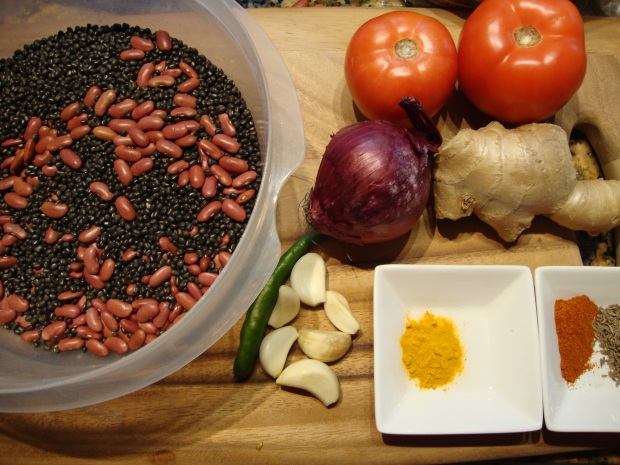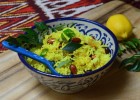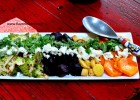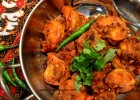Daal Makhani
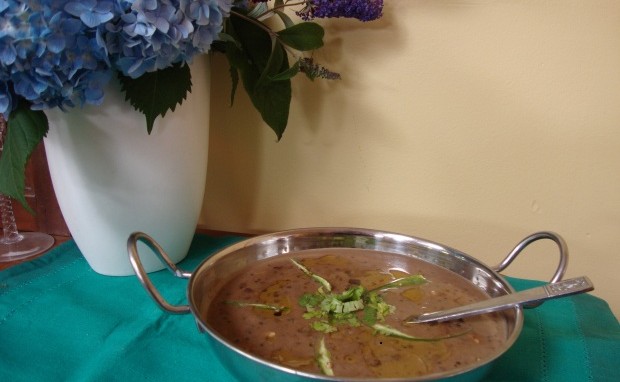
India’s version of the classic combination of rice and beans is daal (lentils) and chaawal (rice). It is the most plebian of meals and often metaphorically used to denote the bare minimum anyone needs to live. But, do not let the associations of a poor man’s meal fool you into thinking that this lowly pairing is lacking in taste. To the contrary- daal/lentils cooked the Indian way can be very delicious and worthy of the highest of epicurean indulgences.
Traditionally, most Indian families used to cook daal/lentils over a low charcoal or wood flame and often it would take hours to soften the beans. I remember my grandmother talking about the days when they did not have any gas stoves or pressure cookers, she would put the daal and water in a pot and leave it on the fire overnight and by the morning the daal would be softened and ready to be eaten. By the time my mother started running a kitchen of her own, she was spared the torturous process of going to bed with the daal cooking on a flame all night (imagine what a fire hazard that must have been!). My mother would instead soak the beans in water overnight and then the next day use a pressure cooker to speed up the process of cooking. My grandmother was convinced that even though the latter process was more time efficient, it had compromised the taste of this essential dish. Of course, when I started running my own kitchen, I just had my mother’s style of cooking as the baseline for my own taste-o’meter to be functional but at the back of my mind I always wondered if my grandmother’s theory about slow cooking the daal held any water (so to say!). Without endangering the lives of my kids and husband by leaving a pot on the fire overnight, I was able to experiment and verify my grandmother’s theory when I acquired a crock-pot. Yes, sure enough, slow cooking a daal makes a huge difference to its taste – there is more depth of flavor and the texture comes out much better as well. This process can be used for any of the various kinds of lentils (the yellow Moong daal is usually very soft and easy to cook and does not need the lengthened slow cooking) and I used it to make Daal Makhani. Each Indian family has its own way of making daals and there have probably been many battles fought over which is the best way to cook daal. This one is my grandmother’s recipe and has always managed to get me praise from anyone who has tasted it, so I am sticking to this one!
Daal Makhani is like the Cadillac of daals – there is nothing simple or plebian about it! It is a rich dish and definitely not low in calories (courtesy the Ghee and heavy cream that goes into making it); so I make it only on special occasions or when someone specifically asks me for it. This time I made it because my son and 6 of his friends, who have just graduated from high school, have embarked on a week-long road trip to Tennessee to attend a huge music festival. A few of the parents were daring (and kind) enough to undertake the task of chaperoning the gang of teenagers! One of them requested me to make this daal for an evening’s meal for them while they are out camping at this tent city set up especially for the Bonnaroo Music festival. I made a huge pot of the daal makhani and froze it in a Tupperware container, which was then packed into a huge cooler with a ton of ice to keep it from perishing before this adventurous group gets to Tennessee – quite an undertaking, eh? I guess I’ll find out if the daal was a hit with the kids and accompanying adults when they get back but in the mean time I was left with a couple of bowls of it, which my husband and I polished off with some tandoori rotis, without any feeling of guilt – after all we were just making sure that we did not waste any leftovers (wink wink!).
Ingredients:
1. Two cups of Black Urad daal (peel still intact on the daal) – available at South Asian stores.
2. One cup of Red Kidney Beans
3. Two large ripe tomatoes
4. One medium sized red onion
5. Ginger root – about 2 inches in length.
6. 5-6 cloves of fresh garlic
7. One green chili
8. 1 teaspoon of turmeric powder
9. One teaspoon of red pepper/chili powder
10. Two teaspoons cumin seeds
11. Salt to taste
12. One tablespoon of sugar
13. ½ teaspoon of Hing (Asafoetida powder – it is a strong smelling spice used in South Asian cuisine and if you don’t like it or can’t find it, you don’t need to use it)
14. 3-4 tablespoons of Ghee (clarified butter) or just plain unsalted butter
15. ½ cup of heavy cream (if you are making any other daal using this recipe, omit the cream entirely!)
16. one teaspoon of Garam Masala (preferably freshly ground).
Directions:
1. Wash the dry lentils under a stream of cold water to remove any dust settled on them.
2. Place the washed lentils in an electric slow cooker (crock pot) and fill it up with cold water (the level of the water should be above 2-3 inches above that of the daal seeds) and switch on the pot on high heat and set it to cook for 4-5 hours on high heat.
3. Peel the garlic cloves and chop them into thin slices and add them to the crock pot.

4. Add the turmeric powder, salt, two chopped up tomatoes and one whole green chili and replace the lid of the crock pot and let the daal cook slowly in it.
5. After 1-2 hours check to see if the water in the pot seems to be drying up and the daal looks dry and hard, add some more water. If there is still enough water for the cooking process to continue, do not add any more water.
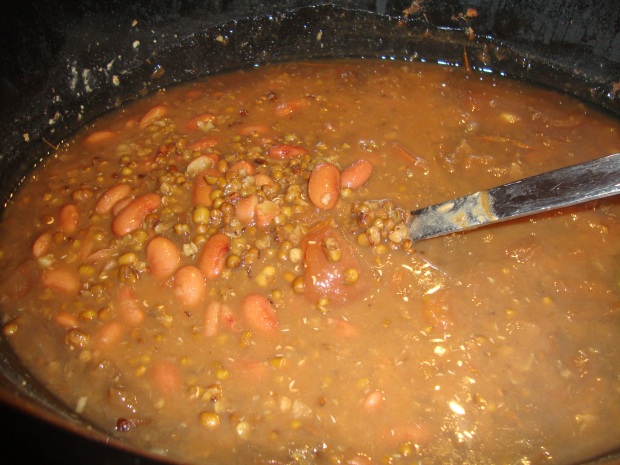
6. After 4- 5 hours check on the daal (the length of times is dependent on the kind of crock pot you are using) – if the lentil seeds look soft and mushy then switch the crock pot off and if they are still hard, continue cooking till the lentils are cooked thoroughly.
7. When the lentils are cooked, transfer them from the ceramic bowl of the crock pot to a large cooking pot and place that on a stove on low heat. Taste for salt – if you want to add some more, please do so at this stage. Also add the sugar and stir. With a wooden spoon, you can also try to mush up the red kidney beans and the black lentil so that the texture of the two gets sort of fused together. The consistency of the daal should be thick and textured – somewhat like lentil soup but not too mushed up.
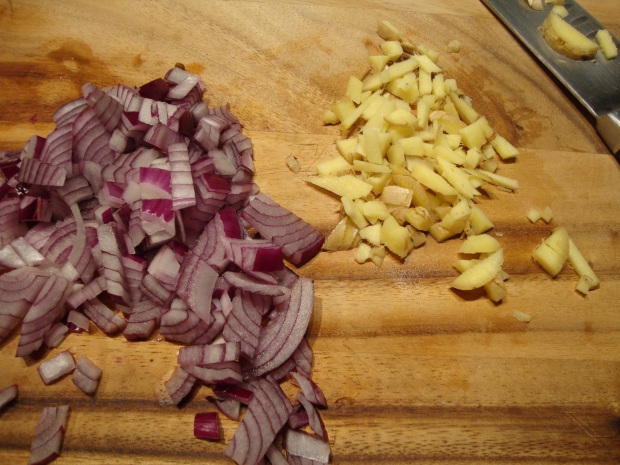
8. While the daal is cooking on low heat, peel and chop the ginger and the onion (small dice).
9. In a medium sized frying pan add the Ghee (or any other cooking oil) and start heating it on high heat. When the Ghee is hot, add the cumin seeds to it.
10. After a minute or two when the cumin seeds start to sputter, add the chopped up ginger pieces. Cook the ginger for 2-3 minutes while you continue stirring it frequently.
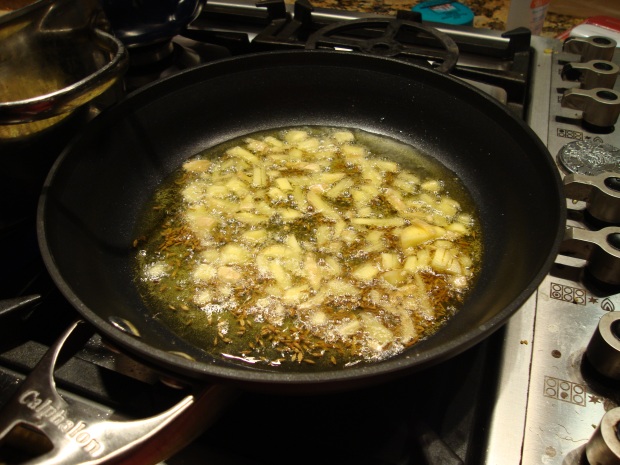
11. When the ginger starts to get slightly browned on the edges, add the diced onion pieces to the pan containing the Ghee and cook the onions for 2-3 minutes (until the onion looks translucent and slightly caramelized) – stir constantly.
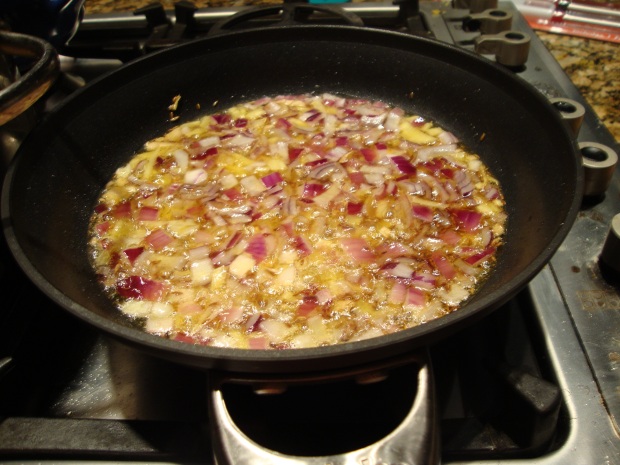
12. While the onions and ginger are cooking, add the heavy cream to the pot of daal still simmering in the large pot and stir the contents.

13. When the onions look slightly cooked, add the asafetida powder and the red chili powder to the pan containing Ghee and stir quickly for about 15-20 seconds (no more than this because you may burn the chili and asafetida powder and that will give the daal a bitter flavor). In fact you can turn the heat off under the pan and then add the chili and asafetida to the hot oil and stir.

14. Pour the hot Ghee and all the other ingredients of the frying pan over the cooked daal.
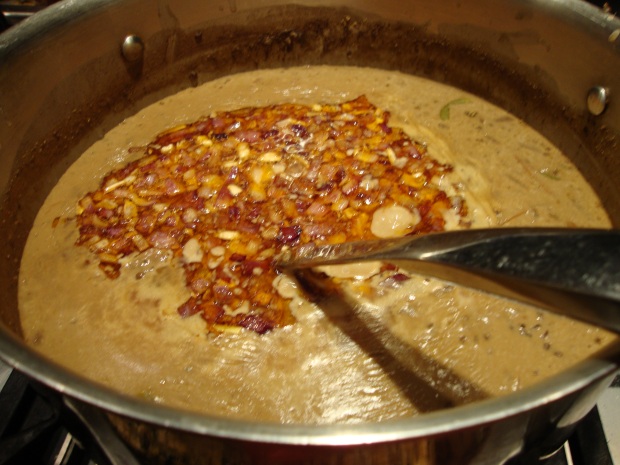
15. The daal is now ready – garnish with a fresh green chili, chopped cilantro leaves and a sprinkling of Garam Masala on top.

